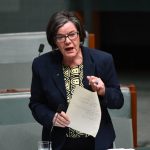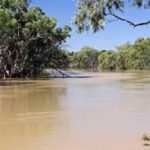We should have been better prepared

To look forward, without unseemly guesswork, requires an element of looking back. I am not a virologist or epidemiologist; my 38 years in specialist medical practice was as a consultant general physician and diagnostician.
Twice in my medical career I have had special cause to worry about catastrophic medical emergencies.
The first time was in 1970 when I was caring for influenza patients in the intensive care unit of Tamworth Base Hospital; the Hong Kong flu epidemic had moved from the big cities to the rural arena. Despite the excellent care (including ventilator assistance) they received from senior and highly qualified critical care physicians, I watched otherwise fit young adults go from healthy to dead in around four days.
The second occasion was in July 2005. At the time I was the chair of medicine at Sydney Hospital, the only hospital inside the Sydney central business district. London had just suffered a catastrophic four-site terrorist bombing. Thanks to the preparedness developed during the years of the Irish Republican Army terror events, the response by UK doctors, nurses and all emergency services was nothing short of amazing.
I was a doctor at Sydney Hospital in February 1978 when Sydney experienced the Hilton Hotel bombing. I saw first-hand how important it was for the survival of the victims that they could reach a hospital with excellent trauma surgeons and a superb ICU in under 10 minutes. All the victims who hadn’t succumbed to instantaneous death at the blast scene went on to recover fully at the hospital. At least four required major emergency surgery immediately on arrival.
From the mid-1980s onwards, successive NSW governments decided to carve up Sydney Hospital’s funding and clinical activity in order to ‘send beds to the west’. The hospital’s doctors protested the action, but were immediately painted as being motivated by nothing but self-interest. The political decisions were reprehensible, for they caused the elimination of Australia’s first coronary care unit, intensive care unit, renal unit, melanoma unit, colo-rectal unit and biorheology unit, to name just a few.
Following the 2005 London bombings, my colleagues and I at Sydney Hospital (at this stage downgraded to just 100 beds and no ICU) reflected on how Sydney could have responded to a four-site terrorist bombing, let’s say in the Wynyard tunnel, on the Sydney Harbour Bridge, at the Sydney Opera House and in a significant business building on Martin Place. The answer was, shamefully, that it couldn’t respond, and countless unnecessary lives would be lost.
And to add to the madness, NSW Health demanded, just three months after the London bombings, that Sydney Hospital retrench all its general surgeons and trauma surgeons. What were all these people thinking?
With that as background, a restorative proposal for Sydney Hospital to resume its earlier function as the Sydney CBD’s prime emergency hospital was instigated in October 2005. I was asked to promulgate the proposal to the political, health and emergency services leaders in the federal and state arenas. The proposal centred on redeveloping the hospital so that it could pioneer the concept of becoming a national security hospital. The expectation was that each of Australia’s capital cities could then redefine one of its CBD hospitals to do likewise.
The proposal emphasised the need for a specially resourced CBD-located hospital that could be reached within minutes and would be able to handle the first wave or waves of victims of any catastrophic event.
The national security hospital would obviously include the ability to skilfully triage the victims and optimise their transfer to any available hospitals outside the CBD. From the start, it was emphasised that the anticipated catastrophic events could include terrorist attacks, viral pandemics, earthquakes, major fires, tsunamis and the like.
Between December 2005 and March 2019, the proposal was discussed in detail with over 40 Australian and NSW political, health and emergency services leaders, including several federal and state ministers for health. And what happened? Nothing.
We have all been let down massively, especially by those health bureaucrats in whom Australians have over the last four decades placed their trust and faith. It is little wonder that today’s politicians and health advisers are struggling; they have had to start well behind the eight ball.
Had the federal and state governments over the last 15 years heeded the advice they were being given, Australia would already have an established national security hospital in every capital city’s CBD. The staff of those hospitals would have already received special training in managing catastrophic health emergencies, including viral pandemics, and would have been able to provide much earlier and more definitive advice to government on how best to limit the emergence of the Covid-19 pandemic in Australia.
The hard work being carried out now by Prime Minister Scott Morrison, Health Minister Greg Hunt, Chief Medical Officer Brendan Murphy and their state and territory counterparts is commendable and all Australians must support them.
In times of military warfare we can’t expect governments to tell citizens all the facts, as doing so could well help our adversaries. But in a war against a virus, there’s nothing to be gained by not telling the citizens all the facts; viruses don’t have ears.
Over my career as a doctor, I found that people can cope with anything, as long as they’re told the truth and the whole truth. Anything less simply breeds distrust, and distrust in the management of the current pandemic will only lead to non-compliance. Governments cannot afford that.
And once the Covid-19 pandemic has dissipated, it will be important for all governments in Australia to learn some worthy lessons so that any future catastrophic events can be more readily handled.
Two obvious initiatives will be the development of a national security hospital within the CBD of each capital city and an increase in spending on health from the current level of about 10% of GDP to about 14% (a figure more in line with the spending on health in the United States).
Such an increase in health expenditure will enable increased resilience of Australia’s health system both in cities and in rural towns. An ageing population will present its own difficulties, but catastrophes mandate a total rethink.
More of what we have had to settle for in recent decades is not an option. There is nothing more certain than that there will be more catastrophes in the decades ahead. Being prepared might be expensive, but it is the only option if we want Australia to become more resilient.
This article was published by The Strategist.
John Graham was a consultant physician and was the chair of medicine at Sydney Hospital for 14 years until his retirement at the end of 2010. He was written widely on the need for better preparedness and disaster planning.














